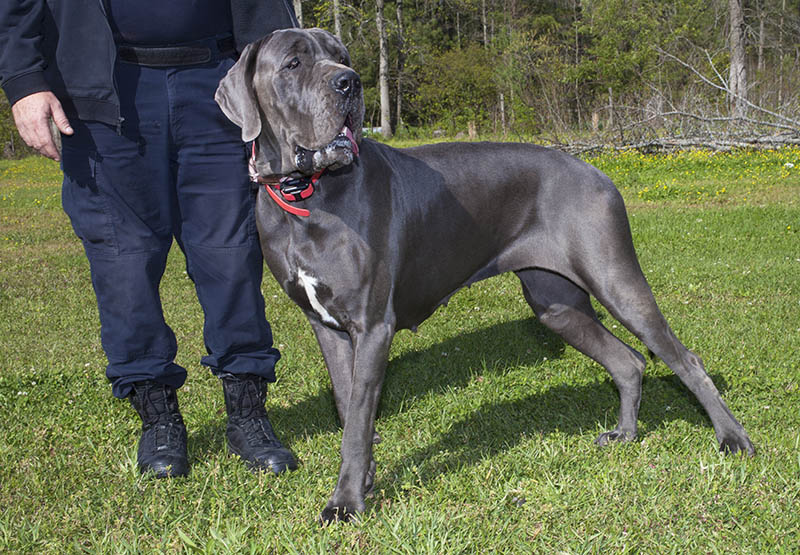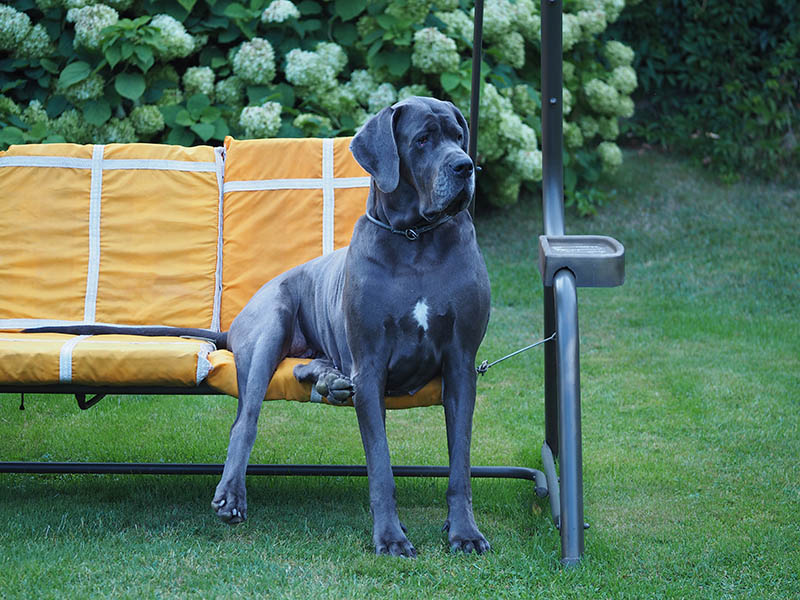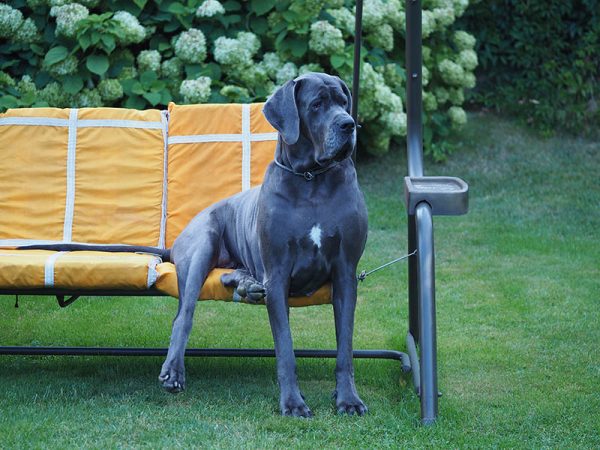The blue Great Dane might look intimidating, and it has the history to prove it’s a formidable foe, but those days are behind it. They’re large, affectionate, and loyal dogs. But where did they come from, and what makes this breed such a good family pet? We have the answers to all of these questions and more below.
The Earliest Records of Blue Great Danes in History
The Great Dane has been around for about 400 years, and they’re descended from mastiff-like dogs. Despite the name, Great Danes actually originated in Germany and were bred to be boar hunters. German breeders concentrated then on making the breed less aggressive, and it’s thought they wouldn’t be very good at hunting boar now because they’re so gentle.
In the 1700s, the dog was named “Grand Danois,” but in the 1800s, the Germans banned the name and called the breed “Deutsche Dogge,” which means German Mastiff. However, in English-speaking countries, the name “Great Dane” is still used.
Great Danes first appeared in the United States in the late 1800s, and they gradually became more popular, but we don’t have an exact date for their arrival.

How Blue Great Danes Gained Popularity
German nobility once used Great Danes to protect country estates and hunt wild boar. In the 18th century, they were prestigious guardians of carriages and estates, and then their ferocious nature was bred out of them.
Great Danes have become gentle giants that get along with families and other animals. In 2021 they were ranked the 17th most popular breed in the United States.
While Blue Great Danes aren’t rare, they can be difficult to breed. To create a blue puppy, both parents must carry the recessive blue gene that turns the black coat blue. Breeding two blue Great Danes doesn’t necessarily guarantee you a litter of blue puppies.
Formal Recognition of Blue Great Danes
The Great Dane was officially recognized by the American Kennel Club (AKC) in 1887, and they acknowledge 10 variations in color. Blue is one of these colors.
The United Kennel Club (UKC), the Dog Registry of America (DRA), and the North American Purebred Registry (NAPR) all recognize the Great Dane, too. Any “faults” with this color that would disqualify a Great Dane include white markings on the chest and toes.
Top 3 Unique Facts About Blue Great Danes
1. They Have Big Hearts and Short Lives
The Great Dane is considered to be a gentle giant. Big dogs notoriously don’t live long lives, which is the case for this breed. They live around 7–10 years, and they will leave a huge hole in your life when they’re gone, but you’re guaranteed a lot of love in those short few years together.
2. They’re Film Stars
Great Danes have been used to portray the killer hellhound in every film adaptation of Sir Arthur Conan Doyle’s “The Hound of the Baskervilles” despite the author never actually specifying the breed. It just shows how scary this dog can look. While the Great Dane is gentle, they’re very loyal and won’t hesitate to protect their families.
3. Great Danes Are Tall and Heavy
Females can grow to 30 inches at the shoulder and weigh 140 pounds, while males can reach 32 inches at the shoulder and weigh 175 pounds. If they stand on their hind legs, they tower over most humans.

Does a Blue Great Dane Make a Good Pet?
Great Danes need room to exercise and generally move around, and you will need a house big enough to accommodate this giant dog. They’re not inexpensive to own because of how much they need to eat, so that is also something you will have to factor in if you’re thinking of getting a Great Dane. Everything costs more if you’re getting it in a bigger size.
Plus, Great Danes are hard on their belongings and can chew through toys faster than you can replace them; you might go through a few doggy beds, especially when they’re young and a little unruly. Because of their size, you will need to ensure you have the time for obedience training so that they are manageable when they’re fully grown. This is not a dog you can physically restrain if it’s trying to get away from you.
They’re a wonderfully loving and tolerant breed and make great family pets if you socialize them early on. They get along with other animals, but you must supervise them around children. Of course, you shouldn’t leave your small children around dogs unattended anyway, but these dogs are so big that they might send a small child flying with a happy leap or a wagging tail. Your Blue Great Dane will also shed a lot, and you’ll need to brush its coat regularly.
Final Thoughts
The Blue Great Dane is large, loyal, and shares a long history with humans. The dog started as a hunter, working alongside humans, but was transformed into a remarkable family dog. They might not be ferocious anymore, but when it comes to their family, they’re reliable protectors. They’re expensive to keep and take up a lot of space, but they’re definitely worth it.
See also:
- Irish Wolfhound vs Great Dane: Which Should I Choose
- Why Does My Great Dane Lean on Me? (5 Typical Reasons)
Featured Image Credit: ElenVik, Shutterstock











